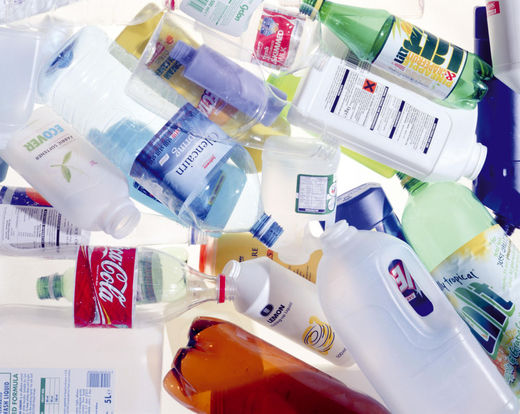BPA has been linked to fertility problems, obesity, diabetes, heart disease, attention deficit disorder and cancer. Scientists at the University of Missouri, led by Cheryl Rosenfeld, found that a constant stream of BPA into the body could result in the chemical sticking around longer than expected.
"When BPA is taken through the food, the active form may remain in the body for a longer period of time than when it is provided through a single treatment, which does not reflect the continuous exposure that occurs in animal and human populations," Rosenfeld said. "We need to study this further to determine where the ingested BPA becomes concentrated and subsequently released back into the bloodstream to be distributed throughout the body."
She also considered that the consequences of this could be even more dire:
We know that the active form of BPA binds to our steroid receptors, meaning it can affect estrogen, thyroid and testosterone function. It might also cause genetic mutations. Thus, this chemical can hinder our ability to reproduce and possibly cause behavioral abnormalities that we are just beginning to understand.BPA is commonly used in the lining of canned food, in plastic bottles, and on cash register receipts, among other applications. The Centers for Disease Control has shown that it is also in the urine of 93 percent of Americans.
I reported a few weeks ago that the Food and Drug Administration (FDA) recently affirmed that BPA in cans leaches into different foods at variable, erratic rates. Another study out this week showed that 95 percent of the BPA in preschoolers' urine had been taken in through their food sources. This backs up the 2010 report [PDF] by the World Health Organization (WHO) stating that food was by far the primary source of exposure to BPA in humans.
In addition to media coverage on this study, Chemical & Engineering News, the magazine published by the American Chemical Society, has made BPA the focus of this week's issue.
One article looks closely at the toxicity debate. The growing consensus among consumers is that they don't want it in their food at any dose, and health advocates point to many of the low-dose studies that increasingly show reason for concern. Meanwhile, the industry - which is producing 12 billion pounds of the chemical every year, with demand rising by five percent annually - doesn't want to lose their billion-dollar market. The article states that can liner and baby bottle applications represent about five percent of BPA use - meaning that it might make better sense for advocates to organize for partial bans, like the nine states which have made moves to ban the substance in baby bottles.
However, this doesn't rid us of channels for BPA exposure. In addition to human exposure via other types of food packaging, cashiers who handle receipts and the workers in facilities that use and produce BPA are still at high risk for exposure and illness. The industry also claims it has yet to find truly suitable alternatives. In addition, those that are in use now - like Bisphenol-S - are not necessarily any better for us. Indeed, most of them are also endocrine disruptors with the potential to cause the same set of diseases.
This may leave you wondering what to do to avoid ingesting BPA. One way to minimize your exposure is through a diet of fresh, whole foods, including fruits and vegetables, which has been proven to dramatically decrease the amount of BPA in the bloodstream.
In the meantime, California stands on the edge of voting to pass a BPA ban in the next week. Last month, the State Assembly passed a bill to ban BPA and in the next week, the bill is expected to be heard by the Senate Health Committee, chaired by Dr. Edward P. Hernandez (D-Los Angeles), who abstained from voting on a similar bill that was defeated last session. Based on the overwhelming evidence, let's hope California makes the right decision this time around.
About the author
Paula Crossfield is the managing editor of Civil Eats. She is also a regular contributor to the Huffington Post and is a contributing producer at The Leonard Lopate Show on New York Public Radio where she focuses on food issues. An avid cook and gardener, she currently tends a vegetable garden on her roof in the Lower East Side.




Reader Comments
to our Newsletter